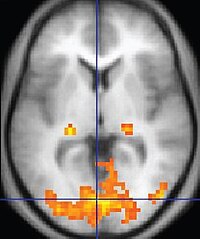
Photo from wikipedia
Nonlinear transverse vibrations of in-plane accelerating viscoelastic plates are analytically and numerically investigated in the presence of principal parametric and 3:1 internal resonance. Due to the axial acceleration, the plate… Click to show full abstract
Nonlinear transverse vibrations of in-plane accelerating viscoelastic plates are analytically and numerically investigated in the presence of principal parametric and 3:1 internal resonance. Due to the axial acceleration, the plate tension varies in the transporting direction. For a range of mean velocity, the natural frequency of the second mode is almost equal to three times that of the first mode, and that leads to a possible 3:1 internal resonance. The governing equation and the corresponding boundary conditions are derived from the generalized Hamilton principle. The method of multiple scales is applied to reveal that the steady-state responses have two types: trivial and nontrivial (two-mode) solutions. The stabilities of the steady-state responses are determined via the Routh–Hurwitz criterion. The analytical investigations demonstrate the effects of viscous damping coefficient, the viscoelastic coefficient, and the moving speed fluctuation amplitude on the stability of zero solutions and the amplitude of the nontrivial solutions. A differential quadrature scheme is developed to solve numerically the governing equation under the given boundary conditions. The numerical results agree well with the approximate analytical results.
Journal Title: Nonlinear Dynamics
Year Published: 2019
Link to full text (if available)
Share on Social Media: Sign Up to like & get
recommendations!